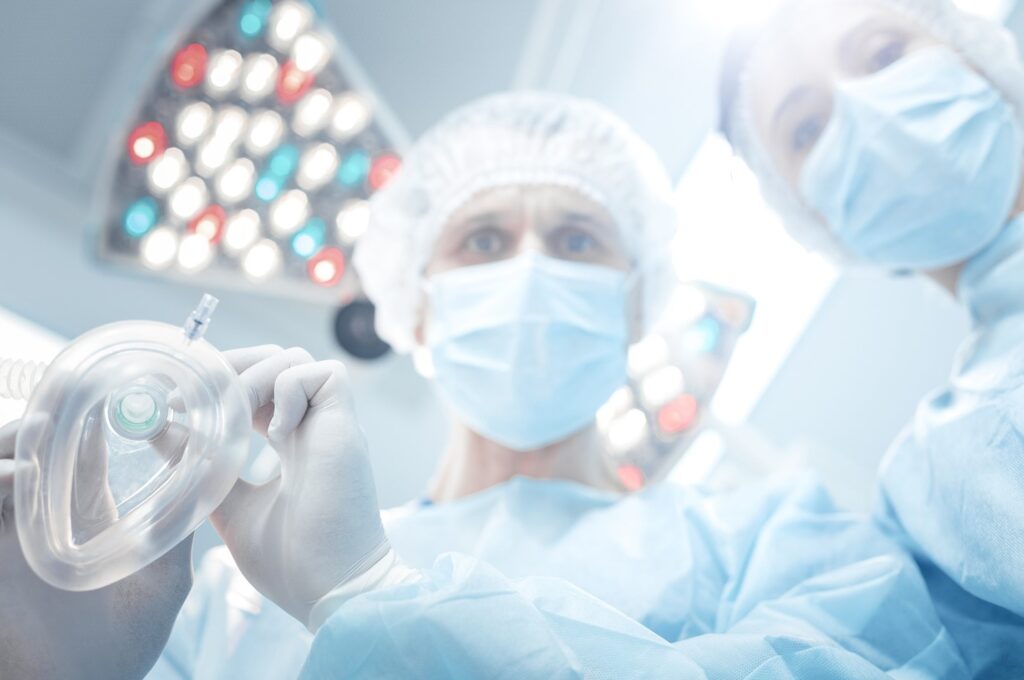Anesthetizing a patient for surgery is a complicated procedure involving precise mixing of medications and close monitoring of the patient’s vital signs. It necessitates incredible skill and attention to detail. The primary goal of anesthesia is to render a patient unconscious, block pain signals, and prevent involuntary reflexes while another medical provider performs surgery.
With the seriousness of the procedure, you might expect the most common malpractice claims for anesthesiology would be for catastrophic complications such as death or disability. While these do unfortunately occur, the most common anesthesia malpractice claim is for something decidedly less life-threatening but still very serious for the patient who experiences it.
The Most Common Claim
The surprising most common claim – tooth damage. In fact, it makes up almost a quarter of all anesthesiology claims (22 to 23%). The majority of these damages take place during intubation. This is when a tube is inserted through the mouth and into the windpipe to ensure that the patient gets enough oxygen while they’re sedated for surgery.
This procedure can be tricky because the tube must curve to pass down the trachea and every patient’s anatomy is unique. Medical providers use different equipment to perform this procedure which can come in contact with the patient’s teeth resulting in damages such as: chipped or cracked teeth; damaged cosmetic or restorative dental work; teeth knocked loose; and teeth knocked out.
This is why it is essential that anesthesia providers document a pre-surgical assessment of the patient’s teeth and a plan to prevent tooth damage during the procedure. They should also note the risks to the teeth have been adequately communicated to the patient, and the patient gives informed consent.
The determination in many tooth damage cases hinges not on proper technique but on appropriate documentation. Medical providers are less open to liability claims if they have documented the pre-operative condition of the patient’s teeth and the measures they took to minimize damage.
Other Common Complications
The remaining anesthesiology claims are made up of complications that are more expected in malpractice cases, including: death; cardiac or respiratory arrest; organ damage (typically brain injury; nerve damage; and ongoing pain.
The two most common claims or suits related to anesthesia were an improper performance of the anesthesia procedure and improper management of a patient under anesthesia.
The improper performance claims typically stemmed from issues with intubation, injecting medication into a peripheral vein, or injecting anesthesia into the spinal canal. These have decreased over the years, possibly due to new technologies such as ultrasound guidance.
On the other hand, improper monitoring claims have risen as a percentage of all claims. These primarily involve complications with the respiratory, cardiac, and central nervous systems due to medical conditions present before the patient went into surgery. They typically involve a failure to obtain an adequate history and physical on a patient with multiple medical comorbidities before surgery. Obesity, sleep apnea, and high blood pressure are all likely to impact the patient’s anesthesia course and should be accounted for by the provider.
The Rate of Claims Related to Anesthesia
Despite its complexity, the rate of all types of anesthesiology claims has historically been lower than most other medical specialties. In fact, rates are similar to those seen in internal medicine. Deaths as a result of general anesthetic are considered rare.
The lack of malpractice claims is typically attributed to a push for patient safety in the late 1980s with the founding of the Anesthesia Patient Safety Foundation (APSF) and significant new developments in monitoring equipment and patient assessment guidelines.
New advances in the field include continuous real-time monitoring of oxygen delivery and patient ventilation, new medications, and realistic patient simulators. There have also been advancements in improved communication among team members and adherence to national guidelines.
This focus on patient safety may account for the reason the much less expensive tooth damage claims have moved to the front of the pack. Fortunately, most instances of tooth damage are repairable through cosmetic dentistry. Though, they can cause significant pain, disruption, and expense to the patient.











